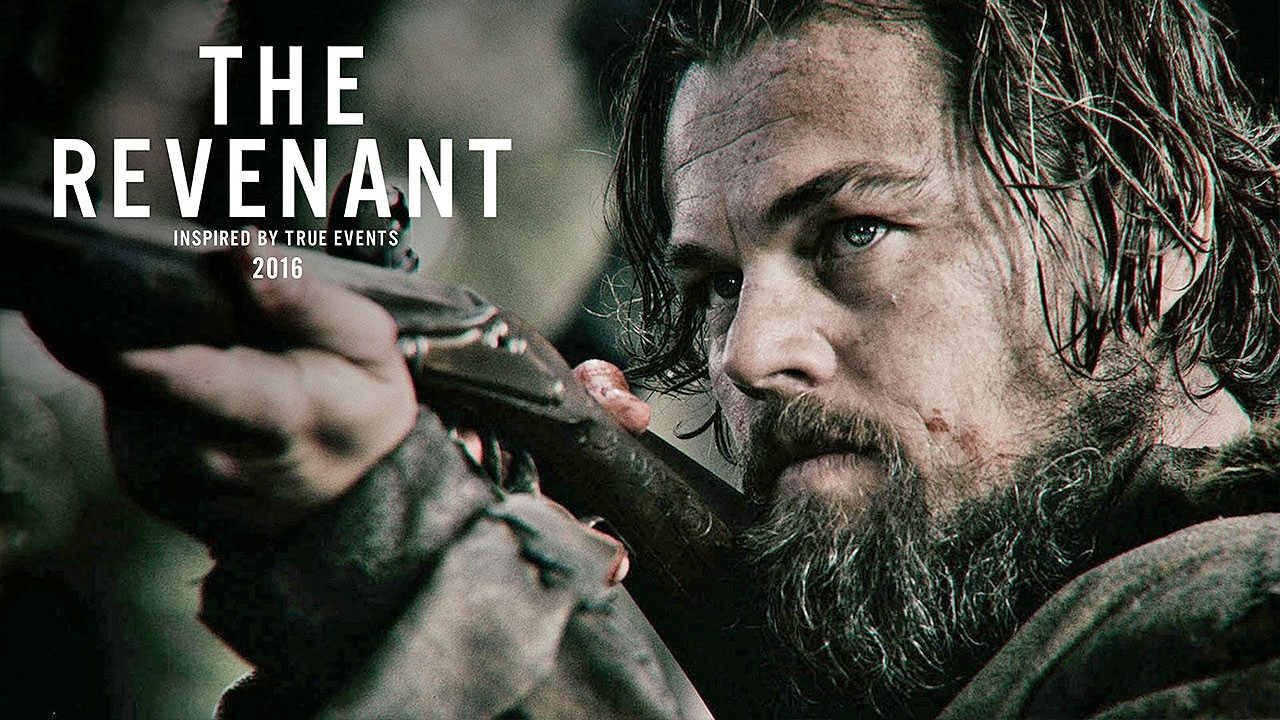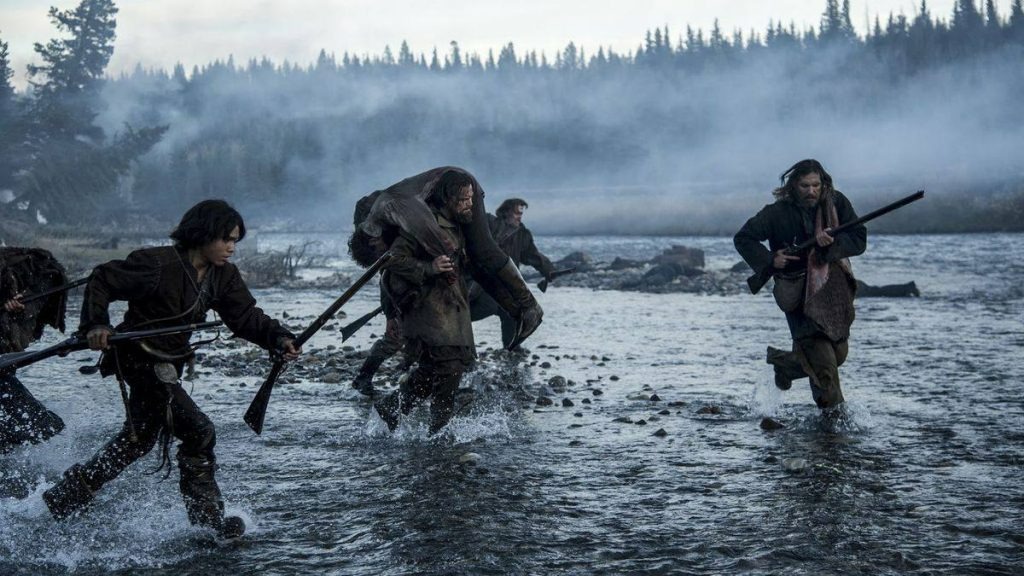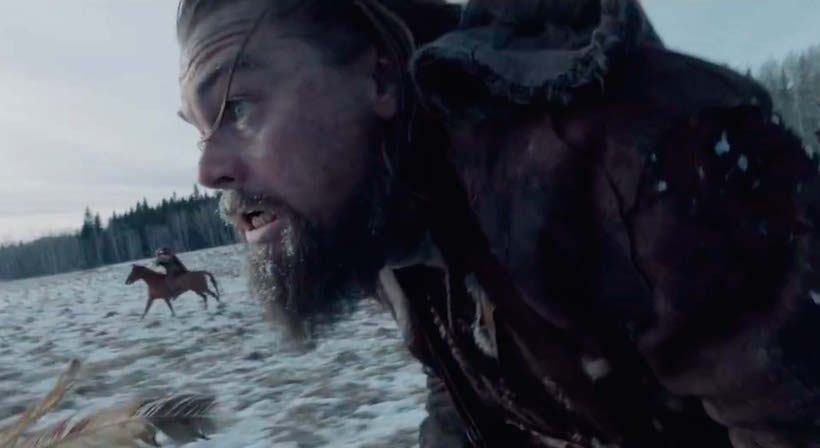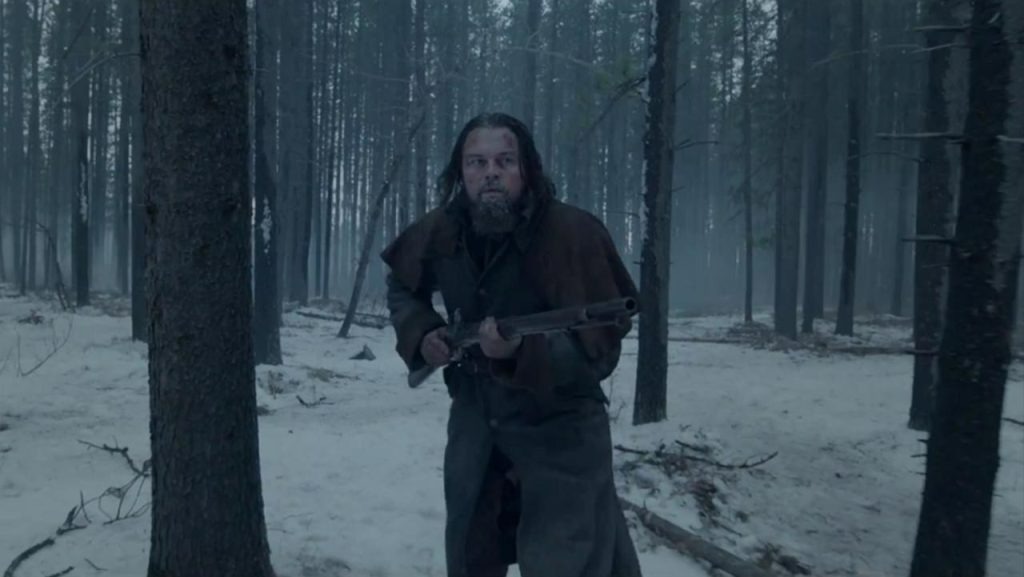
The Revenant (2015), directed by Alejandro G. Iñárritu and written by Iñárritu and Mark L. Smith, is a gripping and visually stunning survival drama set in the 1820s. Based on true events, the film tells the harrowing tale of frontiersman Hugh Glass, played by Leonardo DiCaprio, who embarks on a relentless journey of survival and revenge after being left for dead by his companions. With breathtaking cinematography, a powerful performance by DiCaprio, and an intense narrative, The Revenant captivates audiences and immerses them in its brutal, unforgiving world.
The film’s plot centers around Hugh Glass, a fur trapper and explorer who is severely injured by a bear attack. Left for dead by his companions, including John Fitzgerald (Tom Hardy), Glass is forced to survive in the wild, enduring unimaginable hardships. His primary motivation is not only to survive but also to seek revenge on Fitzgerald, who abandoned him. This story of vengeance and resilience is both emotionally charged and gripping, as Glass battles the elements, wildlife, and his own physical limitations in his pursuit of justice.
One of the most striking elements of The Revenant is its visual style. The film was shot in natural light and primarily in remote locations, creating a raw and immersive experience for the audience. The cinematography, led by Emmanuel Lubezki, is breathtaking, capturing the stark beauty of the wilderness and the brutal conditions that Glass must endure. The wide, sweeping shots of the snowy landscapes contrast with the intimate and intense close-ups of the characters’ struggles. The use of long takes and minimal dialogue also adds to the film’s immersive quality, allowing the visuals and physical performances to take center stage.
At the heart of the film is Leonardo DiCaprio’s powerful performance as Hugh Glass. DiCaprio portrays Glass with a raw intensity and commitment that anchors the entire film. His character is pushed to the brink of death multiple times, and DiCaprio’s ability to convey the physical and emotional toll of Glass’s journey is nothing short of remarkable. The film’s minimal dialogue allows DiCaprio to convey much of his character’s pain, determination, and humanity through his physicality and facial expressions. His performance is a testament to the power of non-verbal storytelling and remains one of the most compelling aspects of the film.

The character of John Fitzgerald, played by Tom Hardy, provides a strong antagonist for Glass’s quest. Fitzgerald is portrayed as a ruthless and self-serving individual, whose actions drive much of the film’s conflict. Hardy’s portrayal of Fitzgerald adds an element of danger and unpredictability to the story, contrasting with DiCaprio’s more stoic and determined character. The dynamic between the two actors creates a palpable tension that intensifies the film’s stakes, especially as Glass gets closer to his ultimate goal of revenge.

The film also explores themes of survival, nature, and the human spirit. As Glass battles the harsh environment, the film delves into the primal instincts required to endure such an unforgiving world. The wilderness becomes both a beautiful and terrifying force, constantly testing Glass’s resolve. Additionally, The Revenant examines the relationship between humans and the natural world, highlighting the brutality and beauty of nature, as well as the resilience of the human spirit in the face of overwhelming odds.

In conclusion, The Revenant (2015) is a stunning and visceral film that combines breathtaking cinematography, an intense performance by Leonardo DiCaprio, and a gripping story of survival and revenge. Directed by Alejandro G. Iñárritu, the film transports the audience into the brutal wilderness, immersing them in the physical and emotional journey of its protagonist. Through its themes of vengeance, survival, and the human connection to nature, The Revenant stands as a powerful and unforgettable cinematic experience.
